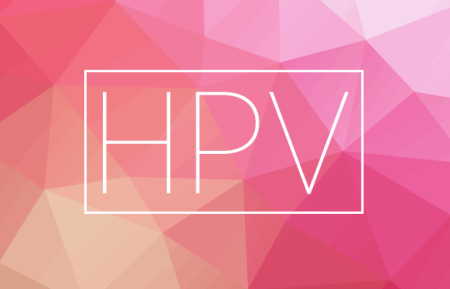Human papillomavirus (HPV), an infection that affects about one in four people, is responsible for about 37,000 new cancer cases each year,

An estimated 42 million Americans currently have HPV, with about 13 million new infections yearly, including in teens, according to the CDC.
An estimated 42 million Americans currently have human papillomavirus, with about 13 million new infections yearly, including in teens, according to the CDC.
Human papillomavirus commonly causes skin or mucous membrane growths (warts). There are more than 100 kinds of HPV viruses. While most infections don’t lead to cancer, some can cause cancer of the cervix, the most common cancer caused by HPV. Human papillomavirus also can cause genital warts and other cancers, including throat cancer.
Related article: Oral sex and HPV: What you should know about oral cancer
Fortunately, an HPV vaccine exists that can prevent most of these cancers.
However, some parents are uncomfortable talking to their children about the HPV vaccine because it protects against a sexually transmitted infection.
HPV vaccines reduce cancer risks
The vaccines must be used well before a person becomes sexually active.
Two doses of the human papillomavirus vaccine are recommended at ages 11 and 12 years. However, the HPV vaccine can be received as young as age 9. The young ages can be a concern for some families.
“Nobody wants to think about their kids having sex at such a young age,” said Dr. Maria Bravo, pediatrician with Marshfield Children’s. “Many parents also perceive that getting the vaccine may make their kids more likely to engage in early sexual behavior.”
Those who receive the vaccine later (age 15 – 26) should receive three doses.
“It’s encouraged that everyone at least through age 26 should get their human papillomavirus vaccine because it has been proven to help protect against certain cancers,” said Dr. Bravo.
Human papillomavirus infections and cervical precancers have dropped since vaccines were introduced in 2006.
- In teen girls, infections with human papillomavirus that cause HPV cancers or warts have dropped 88%.
- In young adult women, infections with human papillomavirus that cause HPV cancers or warts have dropped 81%.
- In vaccinated women, cervical precancers caused by HPV infections linked to cervical cancer have dropped 40%.
HPV signs and symptoms
HPV is spread through skin-to-skin contact, usually during sexual contact with a person who has the virus.
Most infections go away on their own and do not cause problems. But sometimes infection can lead to cancer or genital warts. There is no way to know who will develop cancer from HPV. Many people don’t even know they have human papillomavirus because there may be no symptoms.
When symptoms are present, they can include:
- Genital warts, usually flesh-colored and with a cauliflower-like appearance
- Pain
- Itching
- In women, warts are found on the vulva, around the anus and inside the vagina and on the cervix
- In men, warts are found on the penis and around the anus.
Vaccine rates not increasing
According to the American Academy of Pediatrics, teen human papillomavirus vaccination rates did not increase in 2022. This is the first year in nearly a decade rates have remained the same.
About 76% of teens had received at least one dose of the vaccine. About 62.6% had completed their series.
“We know the pandemic caused families to miss well-child appointments when vaccinations were due,” said Dr. Bravo. “HPV is a vaccine-preventable disease and the vaccine is effective, safe and can help save lives.”
For more information about human papillomavirus and cervical cancer, visit the CDC fact sheet.
For more information about HPV, visit Marshfield Clinic Health System.
Message your provider Schedule appointment
Related Shine365 articles
Abnormal Pap smear: Next steps
Causes of cervical cancer, plus keys to prevention
Birth control options: Choosing the best for your lifestyle


If I elected not to get this for my girls and now they are 13 & 15, can they receive vaccines still?
Kim, Dr. Meyer provided this response to your question: The CDC says, "HPV vaccination is recommended for 11 and 12 year-old girls and boys as one of several important vaccines at this age." The patient’s immune response to the vaccine is higher at younger ages. For those who have not yet been vaccinated or completed the vaccine series it is also recommended for boys/girls and men/women age 13 through 26 years of age. Jim Meyer MD
-Kirstie, Marshfield Clinic